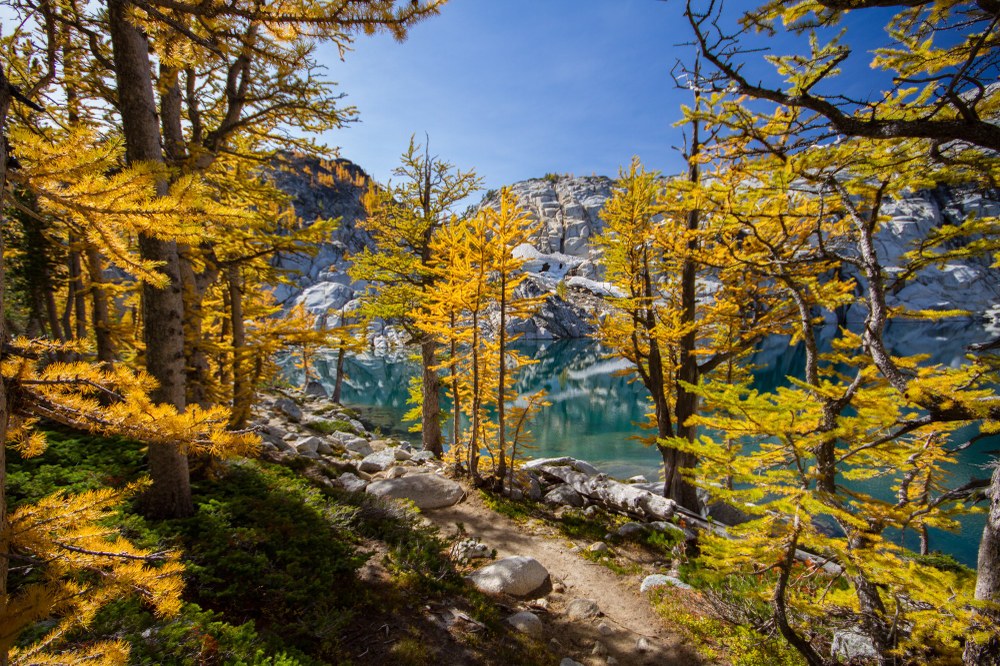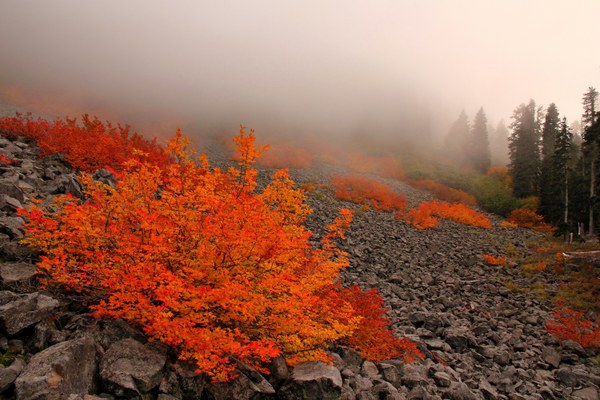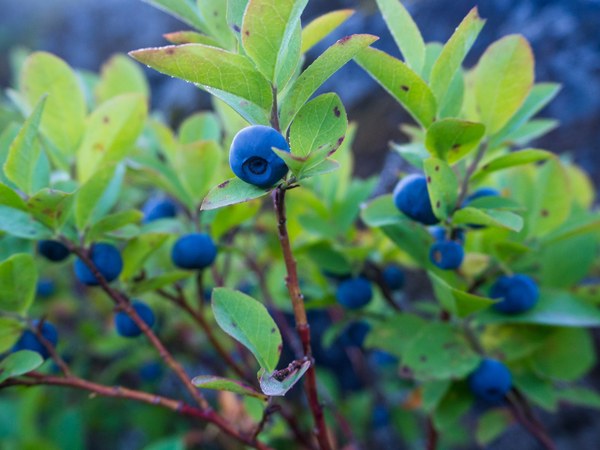
Although you’ll likely need to bring your rain shell, fall is a great time to hike. The cool air, colorful foliage, and snowcapped mountains are an appropriate sign-off to the glory of summer. Learn about the plants dotting our mountainsides and lighting up our trails, and the best places to see them before winter snuffs out the candle.
Plants to Know
Larches
Larches are among the most dramatic trees we have, with sharp, upward-reaching branches covered in bristling gold needles. They are deciduous conifers, losing their needles in winter. We have two native species in Washington; the western larch and the subalpine larch. They grow primarily on the sunny eastern slopes of the Cascades, and can be found in full golden glory from late September through early October.
Vine Maples
Vine maples are lesser-known but quite common. This native plant often grows as a large shrub, with long, spindly branches that weave themselves through the surrounding foliage. As they work their way through the forest, they form a blanket across the hillside that turns yellow and bright orange-red in fall. You’ll see vine maples from sea level into the mountains.
 VINE MAPLES NEAR DEER CREEK. PHOTO BY RYAN FRANKLIN.
VINE MAPLES NEAR DEER CREEK. PHOTO BY RYAN FRANKLIN.
Mountain Blueberries
Although we typically associate spring and summer with berries, higher elevations mean later fruiting seasons for many berries. Head into the hills to enjoy blueberries in September, where they can often be found on the side of the trail in the western Cascades. Remember to keep an eye out for wildlife – they enjoy the late-season offerings just as much as you.
Places to Go
Summit Lake - Mount Rainier Area
This moderate trail offers vibrant fall colors in addition to a direct view of Mount Rainier. In just 6.1 miles you will find marshland, forest, grassy meadows, mountain views, and Summit Lake. The hike in showcases our local vine maples, which can be seen crawling across the surrounding hills. Several camp spots surround the lake as well, making this a great overnight with minimal mileage.
Heather and Maple Pass Loop - Cascades
A stunning loop trail, this 7.2-mile hike features alpine meadows, lakes, mountain views, and its signature ridgeline. Enjoy the nearby peaks and golden larches that light up the trail in fall, with the possibility of blueberries in the forest. If you can, bop down to Lake Ann for views of Heather Pass and additional time with the trees.
 Alpine blueberries. Photo by Ida Vincent.
Alpine blueberries. Photo by Ida Vincent.
Enchantments - Cascades
One of the crown jewels of Washington, the Enchantments are well known for their stunning alpine beauty. Although the elevation gain into the Enchantments is substantial, if you’re in search of larches this is the place to go. Adding to the allure are mountain views, pristine lakes, and mountain goats. Practice LNT diligently; alpine ecosystems are delicate and particularly susceptible to damage.
This article originally appeared in our Fall 2019 issue of Mountaineer Magazine. To view the original article in magazine form and read more stories from our publication, click here.
 Hailey Oppelt
Hailey Oppelt